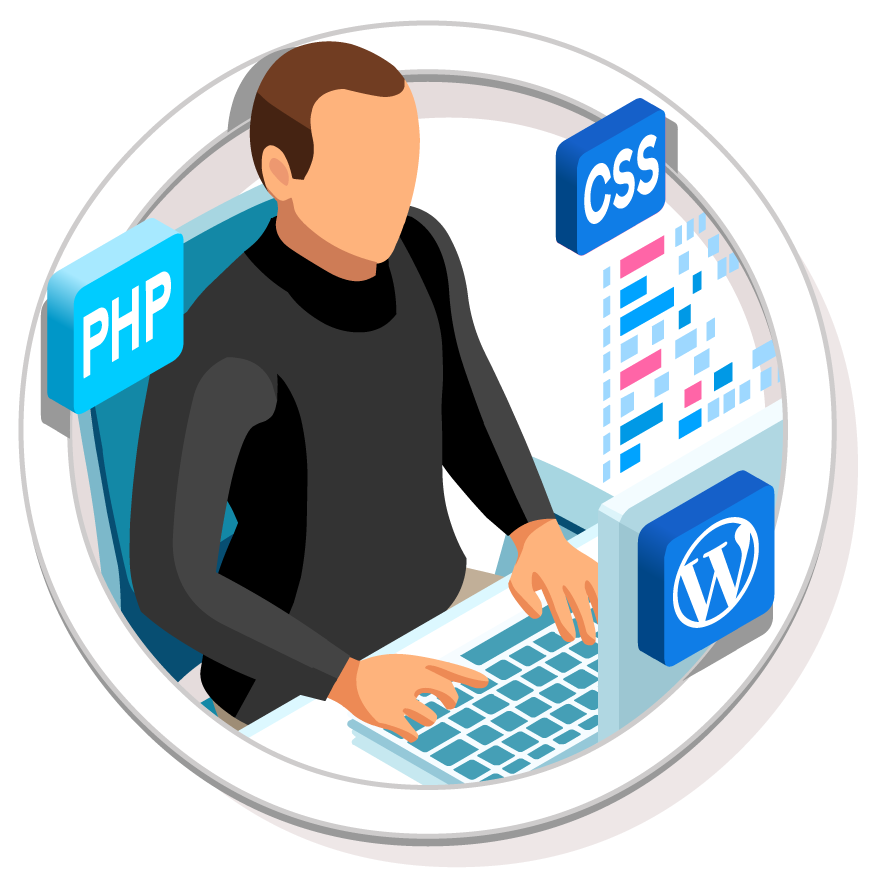Your website isn’t just part of your business—it is your business. It’s how customers discover you, how leads get captured, and how sales are made. If your site runs on WordPress, you’ve got access to one of the most powerful and flexible platforms out there. But with that power comes responsibility: keeping your site secure from hackers, bots, and vulnerabilities.
WordPress sites are common targets for cyberattacks—not because the platform is weak, but because it’s widely used and often mismanaged. Fortunately, protecting your site doesn’t require deep technical knowledge. With the right strategy and support, even small businesses can fortify their WordPress websites against major threats.
Why WordPress Sites Get Targeted
Let’s clear something up: WordPress itself is not insecure. In fact, it’s regularly updated by a large, security-conscious development community. But its widespread use—and the countless third-party themes and plugins available—make it a prime target.
Hackers often exploit:
-
Outdated plugins and themes
-
Weak or reused passwords
-
Poor hosting environments
-
Misconfigured settings
In most cases, attackers aren’t singling you out—they’re running automated bots that scan for easy prey. That’s why even small business sites with little traffic can fall victim.
Step 1: Keep Everything Updated—Always
One of the most common vulnerabilities we see is outdated software. Every time WordPress, a plugin, or a theme releases an update, it often includes security patches for known issues.
Failing to update is like leaving your front door open with a sign that says “come on in.”
At Ask the Egghead, we offer managed WordPress hosting that ensures automatic updates and real-time monitoring—so you’re never left exposed.
Step 2: Use Strong, Unique Passwords and Limit Logins
Your admin account is the gateway to your digital empire. Yet many users still go with “admin” as their username and “123456” as a password. Bad idea.
Here’s what you should do instead:
-
Use a unique username (not “admin”)
-
Create complex passwords (use a password manager if needed)
-
Limit login attempts to prevent brute force attacks
-
Enable two-factor authentication (2FA) for admin accounts
Better yet, consider a managed solution that enforces these standards for all users by default.
Step 3: Install a Firewall and Malware Scanner
Think of a firewall as a security guard at your website’s front door. It filters out malicious traffic before it can reach your site.
There are excellent tools available like:
-
Wordfence
-
Sucuri
-
iThemes Security
These can:
-
Block known bad IP addresses
-
Scan your site for malware
-
Alert you to suspicious activity
With our Managed WordPress Hosting plans, we include professional-grade security tools and configure them to suit your specific setup—no guessing required.
Step 4: Ditch Bad Plugins and Themes
Not all plugins are created equal. Some are outdated, poorly coded, or even designed to inject malicious scripts.
Tips to stay safe:
-
Only download from trusted sources (like the official WordPress.org repository)
-
Avoid plugins that haven’t been updated in the last year
-
Delete any themes or plugins you’re not actively using
We regularly audit plugins and themes for our clients to make sure they’re safe, optimized, and up to date.
Step 5: Choose a Secure Hosting Partner
Your hosting environment plays a critical role in your site’s security. Cheap shared hosting might save a few bucks, but it can leave you vulnerable to attacks that originate from other sites on the same server.
At Ask the Egghead, our Managed WordPress Hosting includes:
-
Isolated environments
-
Automatic backups
-
Built-in malware removal
-
SSL certificates for secure browsing
-
Proactive server-level security patches
You don’t just get a host—you get peace of mind.
Explore our Managed Hosting Services »
Step 6: Backup. Then Backup Again.
No security strategy is complete without reliable backups. If your site is ever compromised, a recent backup can mean the difference between a minor hiccup and a major disaster.
Make sure your backups:
-
Are automated and frequent (daily is ideal)
-
Include the full site (files + database)
-
Are stored securely offsite
-
Can be restored quickly
With our hosting plans, backups are automatic and stored off-site. Restoring your site is just a few clicks away—no panic necessary.
Step 7: Don’t Go It Alone
Let’s face it: even with the best intentions, most business owners don’t have time to monitor logs, configure firewalls, or check plugin security. That’s where we come in.
Ask the Egghead specializes in fully managed WordPress websites. From setup and design to hosting and ongoing maintenance, we make sure your site is secure, optimized, and ready to scale.
Your job? Focus on running your business.
Final Thoughts
Website security isn’t a one-time checklist—it’s an ongoing process. But with the right tools and a proactive team on your side, it doesn’t have to be complicated.
If you’re unsure where your WordPress site stands today, let us run a quick audit. We’ll identify vulnerabilities and create a security action plan tailored to your business.
Ready to lock it down?
👉 Book a free website audit and start protecting your digital investment today.

